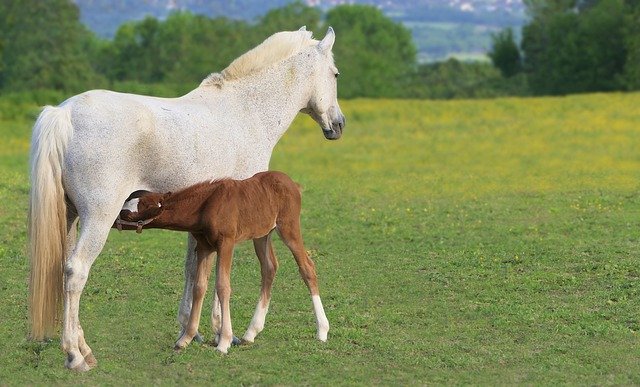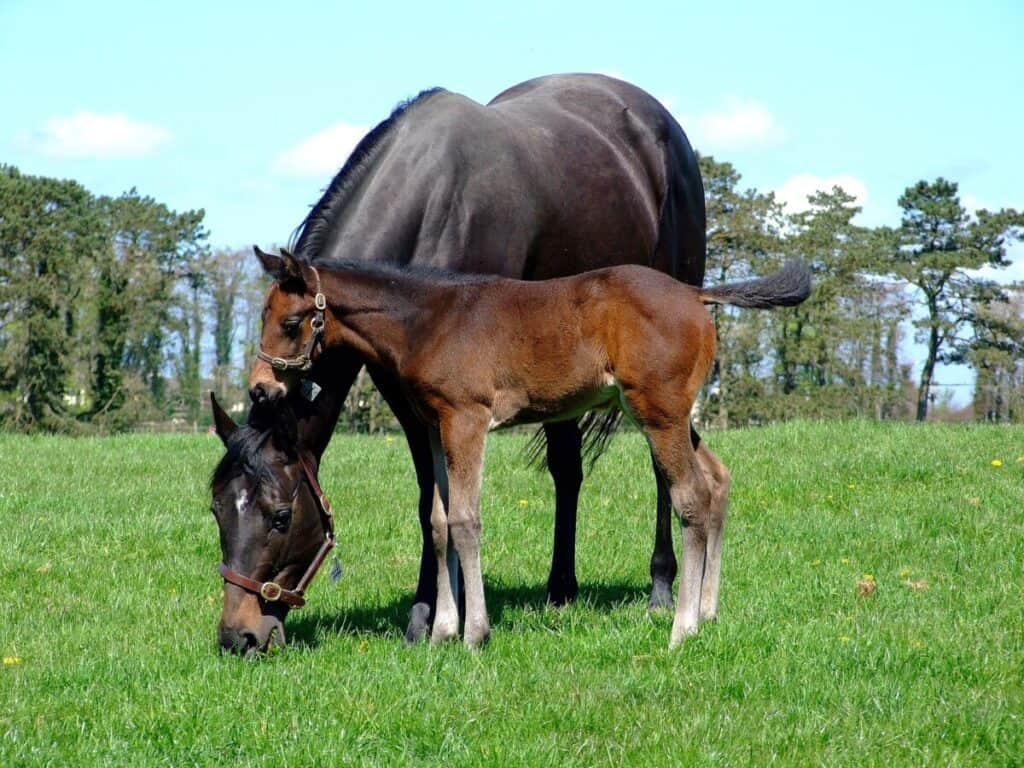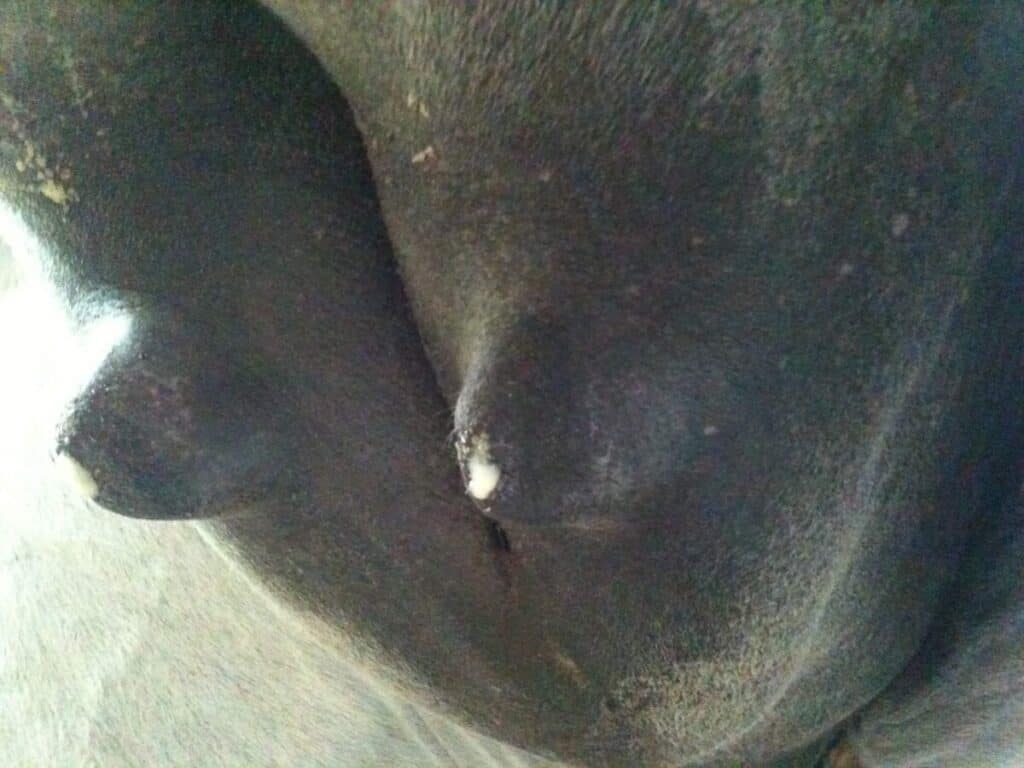Well as we head into Spring, this is prime time of year for Sport Horse Foals to enter this world. If you are a first time breeder, it is vitally important for you to have a good idea what to look for in your mare as she approaches her due date.
The Gestation Period of a Mare

The Gestation period of a horse is approximately 340 days or 11 months. It is important to keep note of your mares last covering date, so that you are well prepared for her due date. Occasionally a maiden (first time mum) mare may go over by a week or so, but if you find your mare is going over by more than a week, it may be a good idea to get your vet to check her to make sure that everything is ok.
There can be times when a mare will foal early, if a foal is born before 320 days of gestation, then it is considered premature, and such a foal will need veterinary treatment to give it the best chance. However, foals which are born prior to 300 days normally do not survive.
Are You Sending Your Mare to Stud or Foaling at Home.

As your mare enters the last phase of her pregnancy it is best to keep a close eye on her at least one month prior to the due date. If this is your first mare to foal, you may decide to send her to stud for the first foaling, so that she is being monitored by professionals who will know exactly what to do if anything goes wrong during her labour. This has an added bonus, as if all goes to plan, you can have the mare recovered during her foal heat while she is at stud.
If you have opted to foal your mare yourself at home, get prepared for some sleepless nights, as most mares will foal at night when they have some peace and quiet, which means lots of night checks for you. I advise that you work closely with your vet for this, so that you know that they are only a phone call away if a problem should arise. I also recommend getting a night camera installed in the foaling box, one that you can monitor from your phone, or laptop, so that you can keep a close eye on your mare all night without leaving the house.
Getting the Stable Ready.
A foaling box is a large square stable usually about 15foot or 16 foot square. The Stable should be completely cleaned and disinfected and a deep straw bed put down. The stable should be kept spotless and cleaned out well every day. Mares can be foaled in the field, but if this is your first time to foal a horse, it is better to bring your mare in every night to keep a close eye on her. It should be remembered that your mare will also need to be regularly checked during the day, especially during her last month of pregnancy. I remember many years ago when I was working on a stud, checks were done a few times a day, but when we went out just before lunch one day we discovered that one of the older mares had foaled in the field. The amniotic sac in older mares can be quite fibrous, it was a windy day and the sac was wrapped over the foals head. Luckily we got there in time, to remove it and clear the foal’s airways, so all was well. This event proved the vital importance of vigilant monitoring of your mare during her last month of pregnancy.
Signs of Foaling.

Here are the most common signs that you will notice during the last month up to the big day;
- The mare’s udder will begin to fill, it will be full in the morning prior to turnout, and will normally be reduced in the evening after her turnout.
- The muscles of the pelvis will begin to relax in preparation for foaling, so the muscles around the tail will become soft and tail will have a sunken appearance. This relaxation of the muscles is to allow the foal to pass easily through the mare’s pelvis during birthing.
- As the due date approaches the mare’s vulva will elongate in preparation for delivery.
- Wax will appear on the Mare’s Teats up to 2 – 3 days prior to foaling.
- In the latter few days prior to delivery the udder will fill and remain full and hard, and occasionally the mare will run milk for a couple of days prior to delivery.
- When in the field the mare will often begin to stand off by herself away from the other mares.
- In the latter stages leading up to the event your mare will become restless. The mare may exhibit colic symptoms, getting up and down, turning and looking at her flank. She may also begin to sweat. At this stage foaling is very close.

The Three Stages of Foaling.
Having foaled mare’s myself at home, the one piece of advice I can offer is that if you are the one handling your mare on a day to day basis you will know what is normal for her. I have noticed subtle changes in my mares on the day of foaling, perhaps they seem a little more restless or grumpy or just plain out of sorts. Again it is always slightly different for each mare, so make a note of such changes and be on high alert when you notice them, as it usually means delivery is just hours away.
Stage 1 of Foaling.
In Stage 1 of Foaling the Mare is usually restless, lying down and getting up intermittingly, perhaps swishing her tail and looking around at her flanks. The first stage of foaling can take anywhere from 1 to several hours to complete. During this stage the foal is moving into position in the birth canal, the foal’s forelimbs and head will be pointing toward the opening of vulva. At the end of the first stage, your mare’s waters will break, which will help to ease the foals passage through the birth canal.
Second Stage of Foaling
In the second stage of foaling the mare’s contractions will become very strong as her body works to deliver the foal. She will become restless, and get up and down a few times in an effort to get into position to deliver the foal. Normally the best position is lying on her side. At this stage it is important to make sure that she is not to close to a wall or any obstacles that may affect delivery of her foal. If you find your mare is too close to the wall, you will have to get her to move into a better position in the stable to allow the foal a safe delivery. Equally if she decides to foal standing up, someone will need to be on hand to help to catch the foal and lie him down safely. Normally the foal will appear the head behind the forelimbs with one foreleg slightly ahead of the other to allow for easy passage of the foal’s shoulders through the birth canal. Once the fore limbs and head of the foal appear they will be covered in the Amniotic membrane. They mare may take a few moments before delivering the rest of the foal. The amniotic membrane will normally break naturally as the foal is delivered, but if not it should be removed from the foals head while also ensuring his nostrils are clear. Allow the mare to rest and no attempt should be made to break the umbilical cord. In those early moments following birth, the foal will receive blood via the umbilical cord; the cord will naturally break as the mare stands or as the foal begins to find their legs. ( See Pictures Below – Courtesy of Connemara Pony Stud Elevage De Garros)

of Elevage De Garros.


break naturally when the mare stands, or the foal stands. Picture Courtesy of Elevage De Garros

The Third Stage of Foaling.
In the final stage of foaling, the Placenta is delivered. This can take a few hours, so it is a good idea to have some string handy to tie up the placenta when the mare stands so that she doesn’t stand on it or damage it. Once the placenta has been delivered, it should be quickly checked to make sure it is all there. If any piece has torn off and remained inside the mare, this can have serious or even fatal consequences. I will normally have a quick scan, and then I will place it in a bucket until the vet arrives. I prefer to have them check it over to make sure everything looks normal.
The Foal

The foal is usually up and has had its first feed within an hour of foaling. The mare’s first milk is called the colostrum contains vital antibodies to support the foal’s immunity. This first feed also jump starts the foal’s digestive tract, enabling him to pass his first stool otherwise known as the meconium. If you find that your foal is straining to pass the meconium, an enema can be used to help the process along.
If the foal is slow to suckle he should be held up to the mare and encouraged. Occasionally with a maiden mare, you may have to assist her in the first few feeds as some novice mares may kick at the foal or will just refuse to allow him to feed. In such cases your assistance is a necessity so that you can ensure that your foal gets all he needs in those first few hours to get him off to the best start. If the foal is weak, it may be necessary to milk the mare and bottle fed the foal to ensure that he gets his necessary colostrum.
I usually have my vet come and check everything once my mare foals, just to give her and the foal the once over.

I personally think foaling is a wonderful experience, and as you lead you mare with her new foal out to the paddock for their first adventure, all those sleepless nights suddenly fade away as you see the little chap take his first tentative trot and canter.
This Article was originally published in the April 2021 Issue of Irish Sport Horse Magazine. We wish to thank Carina Scott from Elevage De Garros for giving us permission to use her pictures for this Article. To find our more about Elevage De Garros check out our interview with them below….
